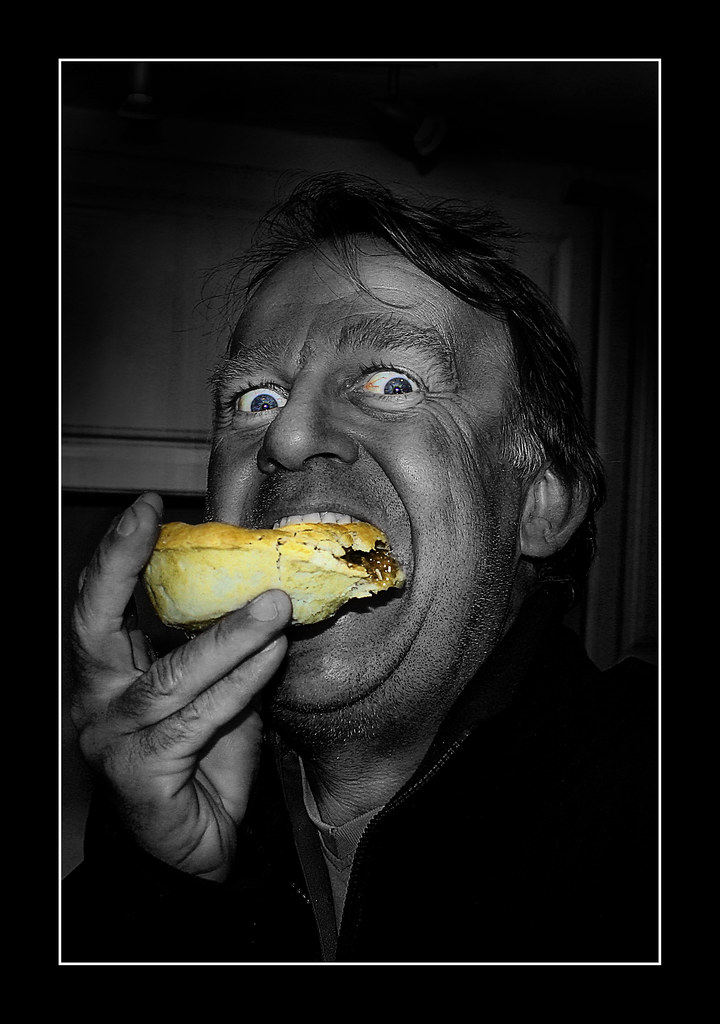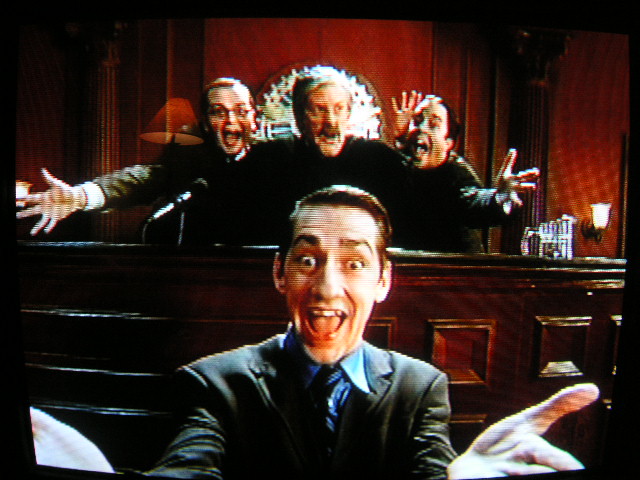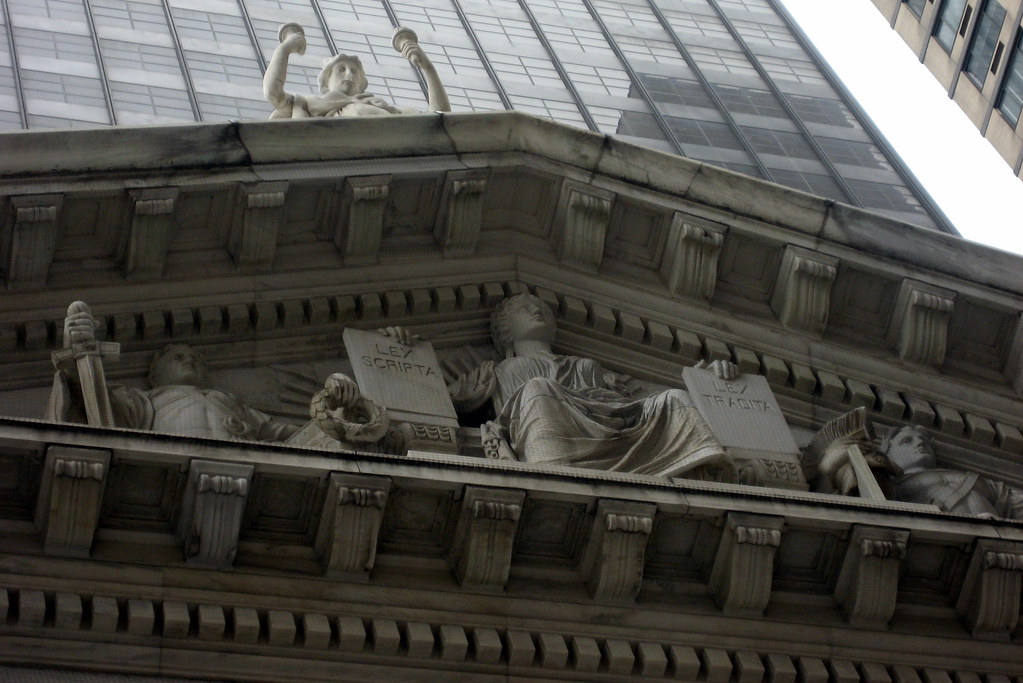 |
 |
 |
The Irreverent LawyerRuminations on law and life, Posts Tagged ‘“lawyers and judges in collusion”’ |
Pies in the sky |

On
the one hand, Judge Molloy regales his readers with how much money he
made as a trial lawyer after leaving the bench, even admitting “We were infatuated with the flow of delightful cash.”
And to make certain you’re suitably impressed, he goes as far as
helpfully calculating the present value of his old law firm earnings.
A while back, someone recommended John Molloy’s 2004 book, The Fraternity: Judges and Lawyers in Collusion. Molloy? I wondered. Wasn’t that the guy who wrote the now dog-tired advice book on sartorial corporate success?
Wrong guy I discovered. The Fraternity was written by the late John F. Molloy — not John T. Molloy. That’s a world of difference. The former was a lawyer-turned-judge-turned-lawyer and the other was a researcher and consultant who first made his bones advising New York City law firms on how clothes could enhance the credibility and authority of young lawyers before judges and juries.
Nevertheless, I finally read The Fraternity. But as it turns out, the old Dress for Success guru’s book, which I read two lifetimes ago was eminently more useful by comparison.
Instead, I was disappointed by the self-proclaimed “confessional diatribe” by the late Tucson, Arizona jurist John Fitzgerald Molloy. Long on confession and short on redemption, it was also empty of promise. With so much discussion about the Fraternity’s self-serving, profit-seeking grip on the legal system, where were the practical prescriptions?
Among Judge Molloy’s pie-in-the-sky suggestions: Eliminate the exclusionary rule. Reduce peremptory challenges. Keep lawyers out of juvenile courts in favor of trained social workers. Take away the plaintiff’s first and last argument in a civil trial. Stop random selection of juries in favor of jurors selected by public officials. Limit the bench to only those with trial experience. Ban judges from working as lawyers after serving on the bench.
In whose lifetime will those sky pies be eaten?
To be fair, there’s enough in Judge Molloy’s wisp of a 244-page memoir sans index to justify the book’s subtitle, “Lawyers and Judges in Collusion.” But the problem is that it mostly reeks of cognitive dissonance, i.e., the conflict that results from simultaneously holding inconsistent beliefs and attitudes. It’s like the chow hound who complains about his meal while asking for a third helping.
Out of both sides.
But then on the other hand and only at the end of his career, does the 74-year old former trial and appellate judge belatedly call for incremental reform of a legal system that’s been “massaged” by “a Fraternity composed of lawyers and judges . . . into something quite different from what was intended — one that derives powers from claiming to have come from our Forefathers, but which in fact is a system that has been restructured, almost beyond recognition, by the Fraternity, for the benefit of the Fraternity.”

Indeed, concluding his recollections of his service on Arizona’s appellate bench, he writes, “In reviewing this chapter, I realize that I may have given the impression that as an appellate judge I was a brave dissenter, always leaning against the tornadic winds of the Fraternity’s movement toward more litigation and more lawyer-profit. The written record gives lie to such a claim.”
Sort of undercuts the argument for reform, that it’s made — only after you’ve gotten yours. Better I think what Edna St. Vincent Millay said long ago about penance, “But if I can’t be sorry, why I might as well be glad.”
Wrong guy I discovered. The Fraternity was written by the late John F. Molloy — not John T. Molloy. That’s a world of difference. The former was a lawyer-turned-judge-turned-lawyer and the other was a researcher and consultant who first made his bones advising New York City law firms on how clothes could enhance the credibility and authority of young lawyers before judges and juries.
Nevertheless, I finally read The Fraternity. But as it turns out, the old Dress for Success guru’s book, which I read two lifetimes ago was eminently more useful by comparison.
Instead, I was disappointed by the self-proclaimed “confessional diatribe” by the late Tucson, Arizona jurist John Fitzgerald Molloy. Long on confession and short on redemption, it was also empty of promise. With so much discussion about the Fraternity’s self-serving, profit-seeking grip on the legal system, where were the practical prescriptions?
Among Judge Molloy’s pie-in-the-sky suggestions: Eliminate the exclusionary rule. Reduce peremptory challenges. Keep lawyers out of juvenile courts in favor of trained social workers. Take away the plaintiff’s first and last argument in a civil trial. Stop random selection of juries in favor of jurors selected by public officials. Limit the bench to only those with trial experience. Ban judges from working as lawyers after serving on the bench.
In whose lifetime will those sky pies be eaten?
To be fair, there’s enough in Judge Molloy’s wisp of a 244-page memoir sans index to justify the book’s subtitle, “Lawyers and Judges in Collusion.” But the problem is that it mostly reeks of cognitive dissonance, i.e., the conflict that results from simultaneously holding inconsistent beliefs and attitudes. It’s like the chow hound who complains about his meal while asking for a third helping.
Out of both sides.
But then on the other hand and only at the end of his career, does the 74-year old former trial and appellate judge belatedly call for incremental reform of a legal system that’s been “massaged” by “a Fraternity composed of lawyers and judges . . . into something quite different from what was intended — one that derives powers from claiming to have come from our Forefathers, but which in fact is a system that has been restructured, almost beyond recognition, by the Fraternity, for the benefit of the Fraternity.”

Indeed, concluding his recollections of his service on Arizona’s appellate bench, he writes, “In reviewing this chapter, I realize that I may have given the impression that as an appellate judge I was a brave dissenter, always leaning against the tornadic winds of the Fraternity’s movement toward more litigation and more lawyer-profit. The written record gives lie to such a claim.”
Sort of undercuts the argument for reform, that it’s made — only after you’ve gotten yours. Better I think what Edna St. Vincent Millay said long ago about penance, “But if I can’t be sorry, why I might as well be glad.”
______________________________________________________________________
Photo Credits: “Big Finish” by Chris Wetherell at Flickr Creative Commons Attribution; other photos via Morguefile.com;”Clark’s Pie,” by Ben Salter at Flickr Creative Commons Attribution; “NYC: New York Supreme Court, Appellate Division,” by Wally Gobetz at Flickr Creative Commons Attribution. https://lawmrh.wordpress.com/tag/lawyers-and-judges-in-collusion/
MAFIA ROBED GAVEL TYRANTS NEED TO EMBRACE THE 21 CENTURY IS NOT HIDING THE MORONIC SIMPLETON CHOICE TO GIVE UP LIBERTY FOR DIGITAL DEBT
ReplyDelete